Jupiter
Jupiter is the largest planet in the solar system, and it is known as a gas giant. It is named after the Roman king of the gods. Jupiter has a diameter of about 86,881 miles (139,822 kilometers), which is more than 11 times the diameter of Earth.
Characteristics of Jupiter:
- Size: Jupiter is the largest planet in the solar system.
- Atmosphere: Its atmosphere is primarily composed of hydrogen and helium.
- Great Red Spot: Jupiter has a giant storm called the Great Red Spot, which has been raging for at least 350 years.
- Moons: Jupiter has over 79 known moons, including the four largest moons known as the Galilean moons: Io, Europa, Ganymede, and Callisto.
- Magnetic Field: Jupiter has a strong magnetic field, which is about 14 times stronger than Earth's.
- Orbit and Rotation: It takes about 12 Earth years to orbit the sun, and it rotates on its axis in about 10 hours, making it the fastest rotating planet in the solar system.
Study Guide:
- What is the size of Jupiter compared to Earth?
- What are the primary components of Jupiter's atmosphere?
- What is the name of the giant storm on Jupiter?
- How many known moons does Jupiter have?
- What are the names of the four largest moons of Jupiter?
- How does Jupiter's magnetic field compare to Earth's?
- How long does it take Jupiter to orbit the sun?
- How long does it take Jupiter to rotate on its axis?
◂Science Worksheets and Study Guides Fourth Grade. Rocks and minerals
Study Guide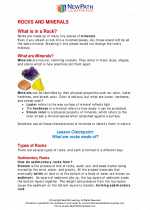 Rocks and minerals
Rocks and minerals  Activity Lesson
Activity Lesson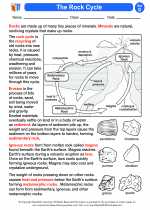 The Rock Cycle
The Rock Cycle  Worksheet/Answer key
Worksheet/Answer key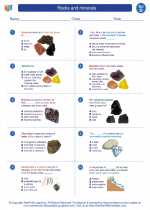 Rocks and minerals
Rocks and minerals  Worksheet/Answer key
Worksheet/Answer key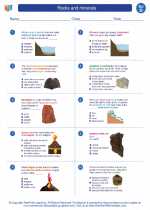 Rocks and minerals
Rocks and minerals  Worksheet/Answer key
Worksheet/Answer key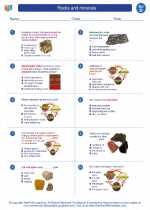 Rocks and minerals
Rocks and minerals  Worksheet/Answer key
Worksheet/Answer key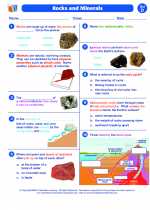 Rocks and Minerals
Rocks and Minerals  Vocabulary/Answer key
Vocabulary/Answer key Rocks and minerals
Rocks and minerals  Vocabulary/Answer key
Vocabulary/Answer key Rocks and minerals
Rocks and minerals  Vocabulary/Answer key
Vocabulary/Answer key Rocks and minerals
Rocks and minerals  Vocabulary/Answer key
Vocabulary/Answer key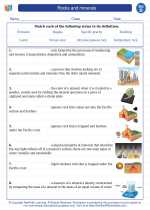 Rocks and minerals
Rocks and minerals 

 Activity Lesson
Activity Lesson
 Worksheet/Answer key
Worksheet/Answer key
 Worksheet/Answer key
Worksheet/Answer key
 Worksheet/Answer key
Worksheet/Answer key
 Worksheet/Answer key
Worksheet/Answer key
 Vocabulary/Answer key
Vocabulary/Answer key
 Vocabulary/Answer key
Vocabulary/Answer key
 Vocabulary/Answer key
Vocabulary/Answer key
 Vocabulary/Answer key
Vocabulary/Answer key

The resources above cover the following skills:
Concepts of Earth Science (SD1, SD2, SD3, SD4)
The student demonstrates an understanding of geochemical cycles by describing that most smaller rocks come from the breaking and weathering of larger rocks as part of the rock cycle.
The student demonstrates an understanding of geochemical cycles by recognizing the physical properties of water as they relate to the rock cycle.